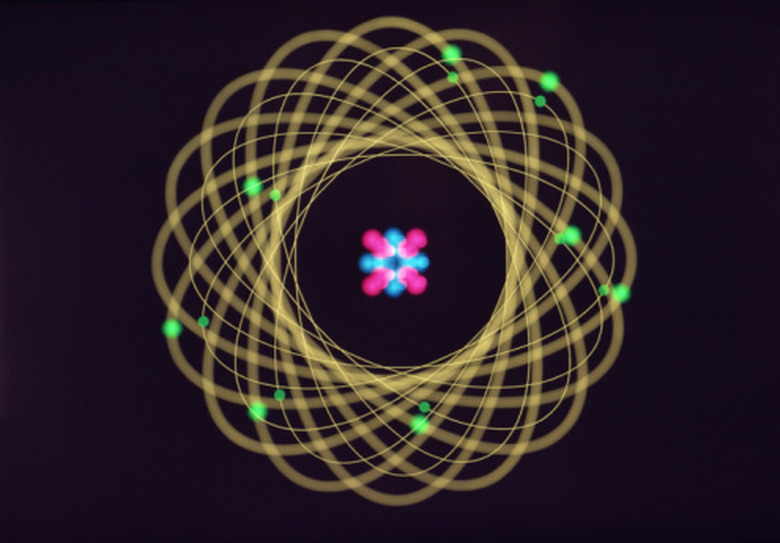Type Of Energy Stored Within An Atom
In his Special Theory of Relativity, Albert Einstein said that mass and energy are equivalent and can be converted to one another. This is where the expression E = mc^2 comes from, in which E stands for energy, m stands for mass and c stands for the speed of light. This is the basis for nuclear energy, in which the mass within an atom can be converted into energy. Energy is also found outside of the nucleus by subatomic particles being held together by the electromagnetic force.
Electron Energy Levels
Electron Energy Levels
Energy can be found in the electron orbitals of an atom, held in place by the electromagnetic force. Negatively-charged electrons orbit a positively-charged nucleus, and depending on how much energy they possess, they are found in different orbital levels. When some atoms absorb energy, their electrons are said to be "excited" and jump to a higher level. When the electrons drop back down to their initial energy state, they will emit energy in the form of electromagnetic radiation, most often as visible light or heat. Additionally, when electrons are shared with those of another atom in the process of covalent bonding, energy is stored within the bonds. When those bonds are broken, energy is subsequently released, most often in the form of heat.
Nuclear Energy
Nuclear Energy
Most of the energy that can be found in an atom is in the form of the nuclear mass. The nucleus of an atom contains protons and neutrons, which are held together by the strong nuclear force. If that force were to be disrupted, the nucleus would tear apart and release a portion of its mass as energy. This is known as fission. Another process, known as fusion, takes place when two nuclei come together to form a more stable nucleus, releasing energy in the process.
Einstein's Theory of Relativity
Einstein's Theory of Relativity
So how much energy is stored in the nucleus of an atom? The answer is quite a lot, compared to how small the particle actually is. Einstein's Special Theory of Relativity includes the equation E = mc^2, which means that the energy in matter is equivalent to its mass multiplied by the square of the speed of light. Specifically, the mass of a proton is 1.672 x 10^-27 kilograms, but it contains 1.505 x 10^-10 joules. This is still a small number, but when it is expressed in real-world terms, it becomes huge. The small amount of hydrogen in a liter of water, for example, is about 0.111 kilograms. This is equivalent to 1 x 10^16 joules, or the energy produced by burning a million gallons of gasoline.
Nuclear Energy
Nuclear Energy
Because the conversion of mass into energy provides such a staggering amount of energy from relatively small masses, this is a tempting fuel source. However, getting the reaction to take place in safe and controlled conditions can be a challenge. Most nuclear power comes from the fission of uranium into smaller particles. This does not cause pollution, but it does produce dangerous radioactive waste. Still, nuclear power accounts for a little less than 20 percent of the power demands of the United States.
Cite This Article
MLA
Carr, Kevin. "Type Of Energy Stored Within An Atom" sciencing.com, https://www.sciencing.com/type-energy-stored-within-atom-8376689/. 24 April 2017.
APA
Carr, Kevin. (2017, April 24). Type Of Energy Stored Within An Atom. sciencing.com. Retrieved from https://www.sciencing.com/type-energy-stored-within-atom-8376689/
Chicago
Carr, Kevin. Type Of Energy Stored Within An Atom last modified August 30, 2022. https://www.sciencing.com/type-energy-stored-within-atom-8376689/
